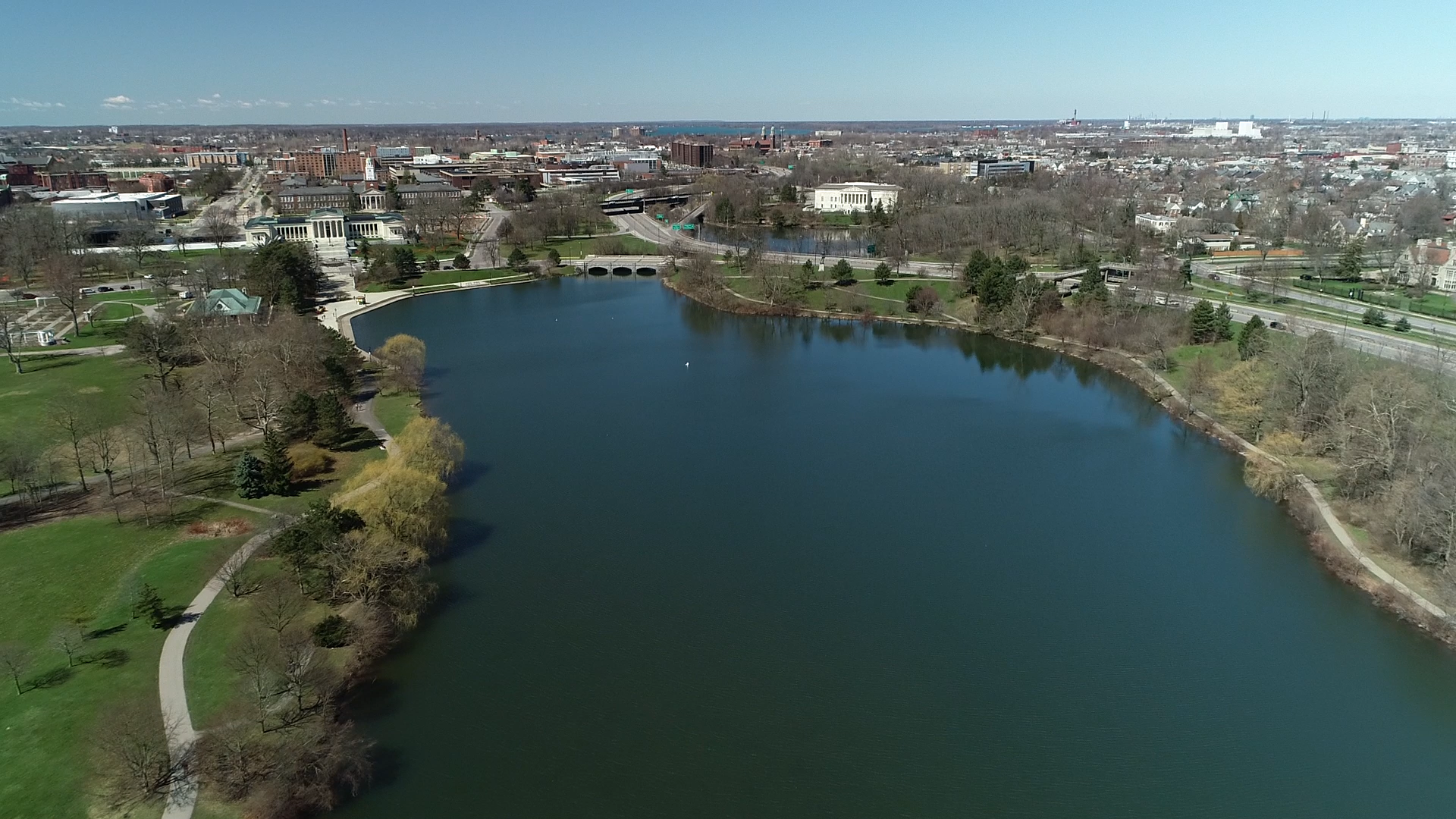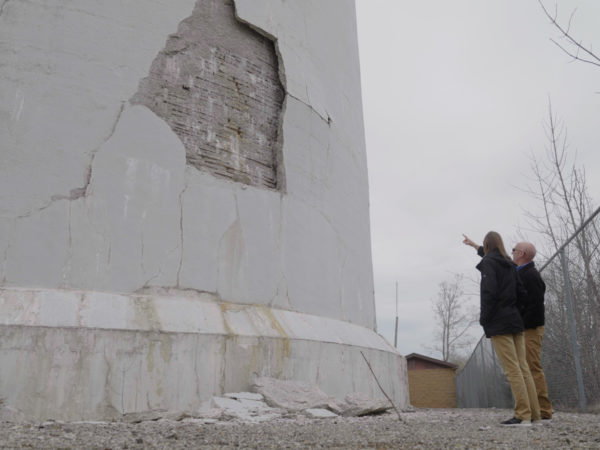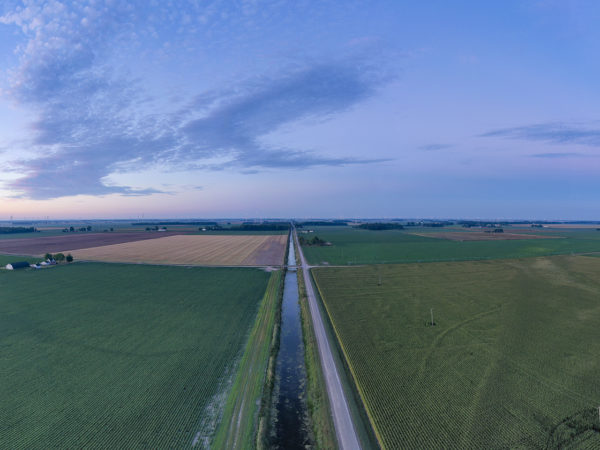
As President Joe Biden tries to advance his high-profile legislative agenda in a sharply divided Congress, a low-profile bill that could help the Great Lakes region is progressing with bipartisan support.
If passed, it could finally help the region shake its Rust Belt image.
The legislation is the U.S. Innovation and Competition Act of 2021, a bill to bolster the country’s lagging federal investments in research and development.
Of interest to the Great Lakes region, the legislation contains a provision to promote geographical diversity in tech and innovation investments. Those investments have traditionally been in ventures on the east and west coasts. The Great Lakes region, still trying to shake the Rust Belt stigma, has lost out.
The region has been “regularly overlooked by federal lawmakers, investors and innovators,” even though its strengths are rooted in higher education institutions and a sizable industrial base with substantial talent, Mark Fisher told Great Lakes Now.
Fisher is CEO of Council of the Great Lakes region, a nonprofit organization focused on economic development and environmental protection.
Last October, CGLR in partnership with the University of Toronto and the University of Illinois system took a step toward attracting highly valued innovation investments when it launched the Great Lakes Higher Education Consortium, which Fisher says is designed to support regional development of tech and innovation.
“We think this is a vehicle the federal government can use to achieve its innovation, science and talent development objectives,” Fisher said, “but it requires the right support and investments from the federal government.”
China leads, U.S. ranked 7th
Following World War II, the U.S. was the world leader in innovation, much of it fueled by investment from the U.S. government, according to Massachusetts Institute of Technology economists and researchers Jonathan Gruber and Simon Johnson.
That investment, which was bipartisan, peaked in 1964 and has since declined, Gruber and Johnson write in their 2019 book, Jump-Starting America. China has passed the U.S., as have other economic powerhouses like Japan, Germany and South Korea. Add Norway and Sweden, and the U.S. has fallen to No. 7.
Part of the solution to closing that gap between the U.S. and China in tech and innovation is to put a focus on geographical diversification of federal investments.
“Geographically concentrated federal investments can be truly transformative: attracting companies and helping to generate more local private-sector employment,” Gruber and Johnson write on their website.
To support their premise in their book, Gruber and Johnson identified 102 urban communities “that are plausible next generation tech hubs, all with large populations, highly educated workforces, and a low cost of living.”
The Great Lakes region has 33 of the potential sites with seven located in Michigan, including Detroit and the Midland-Bay City-Saginaw area. Milwaukee, Green Bay, Toledo and Buffalo/Niagara are among other sites on the list that border the Great Lakes.

Maumee River and Toledo, Ohio (Photo Credit: Natasha Blakely)
Rust Belt perception
A barrier to tech and innovation growth yet to be conquered in the Great Lakes region is the perception that it is still the “Rust Belt,” a reference to its legacy past as the home for heavy industry manufacturing.
Milwaukee Tech Hub Coalition, also referred to as MKE Tech, CEO Kathy Henrich is aware of the importance of the perception of a city in attracting tech and innovation to it.
“One of the largest challenges is that Milwaukee is not perceived as a tech hub despite it being 9.5% of our economy with over 80,000 tech employees when including the Racine and Kenosha regions as well,” Henrich said.
Milwaukee Mayor Tom Barrett has long been sensitive to the “Rust Belt” perception but isn’t buying it.
In a 2008 speech to the Federal Reserve, he said Milwaukee is on the “Fresh Coast,” a reference to Lake Michigan. The city continues to use it in its messaging, best illustrated when Barrett welcomed the 2020 Democratic Convention to the “Fresh Coast.”
Leading in water technology
The U.S. Innovation and Competition Act has five congressional sponsors from the Great Lakes region, including Democratic Sens. Tammy Baldwin from Wisconsin and Gary Peters from Michigan.
Baldwin, in a statement to Great Lakes Now, said she supports the bill because it has a commitment to geographical diversity and it will make investments in research and development.
Specific to Wisconsin, Baldwin said “we are leaders in bioenergy research and water technology, so Wisconsin is well positioned for growth in emerging industries.”
In Milwaukee, Mayor Tom Barrett “has been very pleased to see Milwaukee place high on recent rankings for tech employment growth,” said Aaron Szopinski from Barrett’s office.
According to Szopinski, Barrett said that when considering tech investments, it’s important to consider Milwaukee’s “leading role in water technology and the future of water.”
An early Milwaukee water initiative was the formation of The Water Council in 2009. The Water Council is a nonprofit whose mission is to support “innovation in freshwater technology and drive those new solutions to the industries that need them,” according to the group’s website.
In 2009, the Great Lakes region was emerging as an entity finally willing to tackle big issues like restoration and protecting the lakes from diversions. Barrett was a municipal leader who encouraged cities to engage on water issues, a role traditionally left to the state and federal governments.
“We are excited about the potential to infuse game-changing funding into non-coastal cities in order to accelerate innovation,” MKE Tech’s Henrich told Great Lakes Now.
As strengths, Henrich pointed to Milwaukee’s global recognition for water resources and its historical strength in physical infrastructure that is now infused with digital innovation.
In Michigan, Sen. Gary Peters’ office did not respond to a request to comment on the geographical diversity provision in the Innovation and Competition Act.
But a spokesperson highlighted Peters’ legislative work on the bill in concert with his colleague Democratic Sen. Debbie Stabenow to create a $2 billion incentive program to support domestic production of semiconductor technologies.
Detroit’s Economic Growth Corporation did not respond to requests to comment on the legislation.
Success in Buffalo
Buffalo’s Patrick Whalen welcomes the potential federal investment in innovation and technology from the federal government. He added that “funding of startup companies that result from research is a major problem outside of New York City and California’s Silicon Valley.
Whalen is the director of the Niagara Global Tourism Institute at Niagara University.
A federal program could fill the gap in funding that Whalen calls the “valley of death.” He defines it as the spot where “startups needing a million to 5 million dollars are beyond the stage where angels can help, but don’t need enough to interest the venture capital firms.”
Whalen said Buffalo has a successful program to attract startups that originated with funding from the state and is now self-sufficient.
“If the state of New York can do this, why couldn’t the federal government?” Whalen said.
No easy solution
Securing a commitment from a tech company to locate in a municipality or state is not a panacea. One need only look at Wisconsin’s 2017 deal with tech manufacturer Foxconn.
Foxconn said it would build a $10 billion factory that would create up to a combined 22,000 direct and indirect jobs over time. In exchange, the company would receive $3 billion in tax credits.
Wisconsin even used the Great Lakes Compact to divert Lake Michigan water so Foxconn would have sufficient supply to support manufacturing processes.
That diversion is controversial, since its primary purpose was to support a business venture, which environmental advocates say violates the Compact. Wisconsin was able to approve the diversion without buy-in from the other Great Lakes states based on a provision that states a community that straddles the basin divide can divert water with the approval of the state where it’s located.
Advocates also expressed concern that the questionable diversion for Foxconn would set a precedent that could facilitate future diversion requests.
The Wisconsin and Foxconn deal never met expectations and had to be renegotiated after Foxconn failed to come close to meeting any of its commitments.
MKE Tech’s Henrich declined to comment on Wisconsin’s Foxconn experience.
Buffalo’s Whalen, not referring specifically to Foxconn, said “investing that tax money in the local community is a much better idea.”
The U.S. Innovation and Competition Act is over 2,000 pages as written, and the geographical diversification section is a small part of it, with proposed funding of $10 billion.
The bill was approved in the Senate by a 68-32 vote and has been sent to the House where action is pending.
Catch more news on Great Lakes Now:
Michigan’s climate-ready future: wetland parks, less cement, roomy shores
Green Infrastructure: Cities around the Great Lakes plan for a changing future
Water could make the Great Lakes a climate refuge. Are we prepared?
API key not valid. Please pass a valid API key.Featured image: Buffalo, New York (Great Lakes Now Episode 1013)




